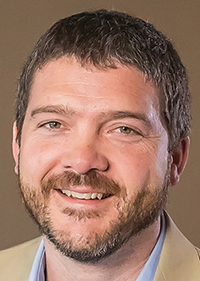Parks and trails and the quality of life
by January 15, 2023 9:47 am 1,135 views

Parks and trails have long been a staple in major cities and smaller communities. When buying or selling a house, this is often a sought-after feature: “only minutes from the city park” or “trailhead access from within the neighborhood.” And while these aid in the increase of the property value, what is often not mentioned are the mental and physical benefits from being nearby to these remarkable amenities.
Quality of life can mean many things, depending on whom you ask. For some, it can be good health, a successful career, family, and relationships, or simply enjoying a cold beer on a nice day. One common thread for most people’s quality of life is a connection, and human connection dates back thousands of years for both social comfort and means of survival. Some even believe that our desire to connect with others matches our basic needs of food, water and shelter.
The pandemic created a schism in this basic need, but thankfully there remained one place for people to connect: outside. Whether it was their backyard, neighborhood playground, or local biking trail, people flocked to the outdoors.
According to the United States Geological Survey, national parks hosted 237 million visitors in 2020.
Park superintendents noted record numbers of people at state parks, city parks noticed a significant uptick in visitors to their outdoor amenities, parents were taking kids to their local playgrounds more often, and even Lowe’s and Home Depot were selling out of plants and outdoor furniture. In a time of unprecedented uncertainty and disconnect, there was one constant and one haven for connection: the outdoors.
The value of parks and trails cannot be overstated. Even disregarding the natural beauty and allure they offer, they provide a place for people to gather, form communities, build relationships and find common interests. For instance, inclusive playgrounds serve a tremendous role not only for kids with special needs but also for the parents to form a group where they can share and support one another.

Biking and hiking have also seen a significant peak in interest. As reported by Statista, bike sales increased by more than $2 billion from 2020 to 2021, and a large percentage of these sales were from adults who hadn’t been on a bike since they were kids.
Northwest Arkansas has become a premier bike destination, and some say it’s the “Mountain Biking Capital of the World.” Bikers come from all over the country, and even the world, to ride mountain bike and hard surface trails. In 2022, Fayetteville hosted the UCI Cyclo-Cross World Championships. More than 17,000 people attended and spent an immense amount of money in the Northwest Arkansas area that goes straight back to the communities. The more people visit, the more we get to build.
Parks and trails contribute to an individual’s quality of life in more ways than one: the monetary value they add to the community, enhanced mental and physical health, and the sense of belonging it brings to the individuals in that community. The added value to the property may have been what drew you to your new house. Still, the next time you’re taking your dog for a walk in the park, hopping on a new bike trail with your riding group, or watching your kids make friends on the local playground, your focus won’t be on the dollars. It will be on the memories and connections you’re making that can’t be found anywhere else.
Jacob Shy manages the parks and trails department at Bentonville firm CEI Engineering Associates Inc. The opinions expressed are those of the author.
